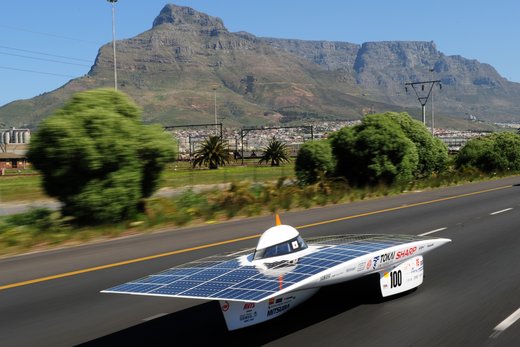27 November 2013
South Africa has set itself ambitious targets for renewable energy. Naturally, solar power features prominently so companies are flocking there from all over the world to set up plants using a variety of technologies, Michèle Bacchus reports.
A veritable “solar rush” is underway as investors scramble to form consortiums with international solar energy companies in time to capture a slice of the sun.
The South African government wants 42% of all newly-installed power-generating capacity in the next 20 years to be based on renewable energy sources.
By 2030, installed capacity of solar power is expected to reach 8,400M.
These goals have seen South Africa fast becoming a centre stage for trying out cutting-edge technologies.
Capturing sunshine is a complex business and there are two ways to go about it: photovoltaic (PV) cells and ‘concentrating solar power’ (CSP).
The photovoltaic (PV) system uses solar cells, usually fixed, to convert light into electricity whereas CSP uses movable mirrors to focus the sun’s rays on either a tower or a parabolic trough.
Both methods are continuously advancing, but since it receives more than twice as much global solar radiation than Europe, South Africa is becoming an innovation hotspot.
One company, Abengoa, is building a 100MW PV plant, called Xina Solar One, which will be able to generate electricity for five hours after the sunset thanks to thermal storage tanks filled with molten salts.

Tokai University Solar Car Team races in the South African Solar Challenge in 2010 (Hideki Kimura/Kohei Sagawa/Wikimedia)
However, five hours is small-fry compared to the 50MW Bokpoort plant currently being built by Saudi Arabian company ACWA Power International. When finished, this plant will boast a whopping nine hours of stored sunshine.
Although South Africa benefits from sunshine all year round, most plants are located closest to the Equator, in the Northern Cape province, an area now heaving with developing solar parks.
It seems that where there is space, there is potential for a solar plant. One solar power company, Scatec, has even struck a deal with a sheep farmer and built a 75MW photovoltaic plant on his farm.
“The fact that renewable energy can work in harmony with the environment and without disrupting surrounding activities is often overlooked,” said Raymond Carlsen, CEO of the Norwegian company.
“After 20 years, we can upgrade the project with the latest technology and continue operations for many years or we can dismantle it and leave the environment in its original natural state,” he said.
The Kalkbult plant, as it is called, has recently become the first power plant to supply ‘clean’ energy to the national grid.
Total, which already has two plants under construction, recently won a contract to build an 86MWp PV plant costing roughly $200m.
This plant could generate electricity for approximately 45,000 households and there is talk of using the power for water facilities too.
In South Africa, solar energy is seen as a way of powering water-pumping and heating, crucial for a large, rural population.
“The only way we will be able to provide energy in a sustainable way to an increasing global population is by utilising renewable energy sources,” said Dr Alf Bjorseth, chairman and founder of Scatec Solar. “South Africa is showing the way.”






